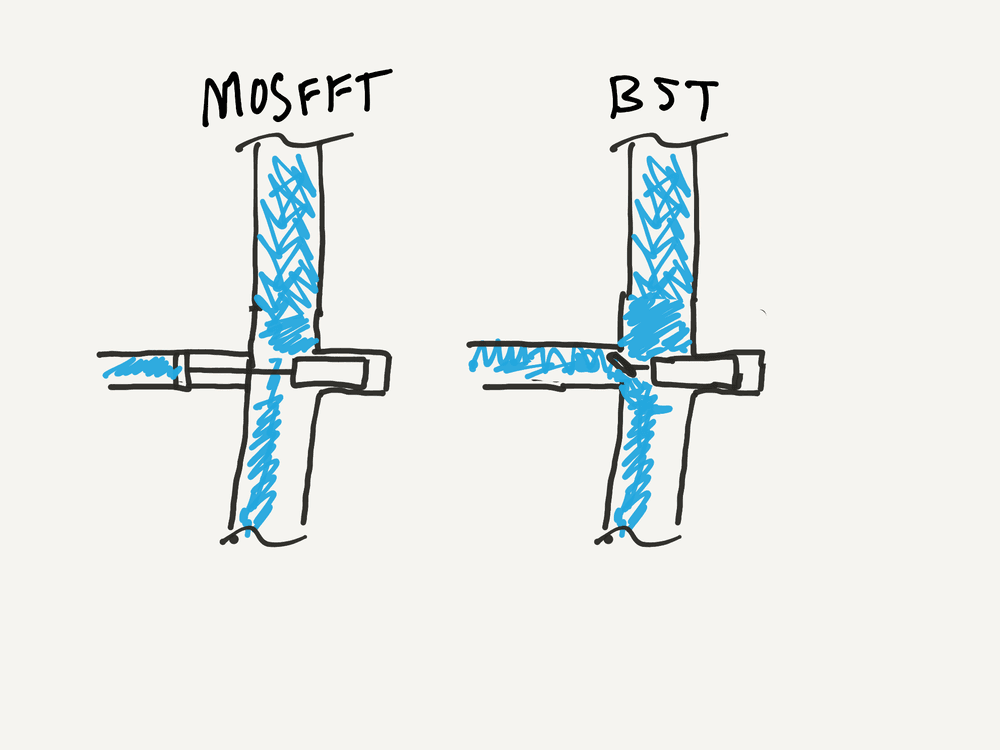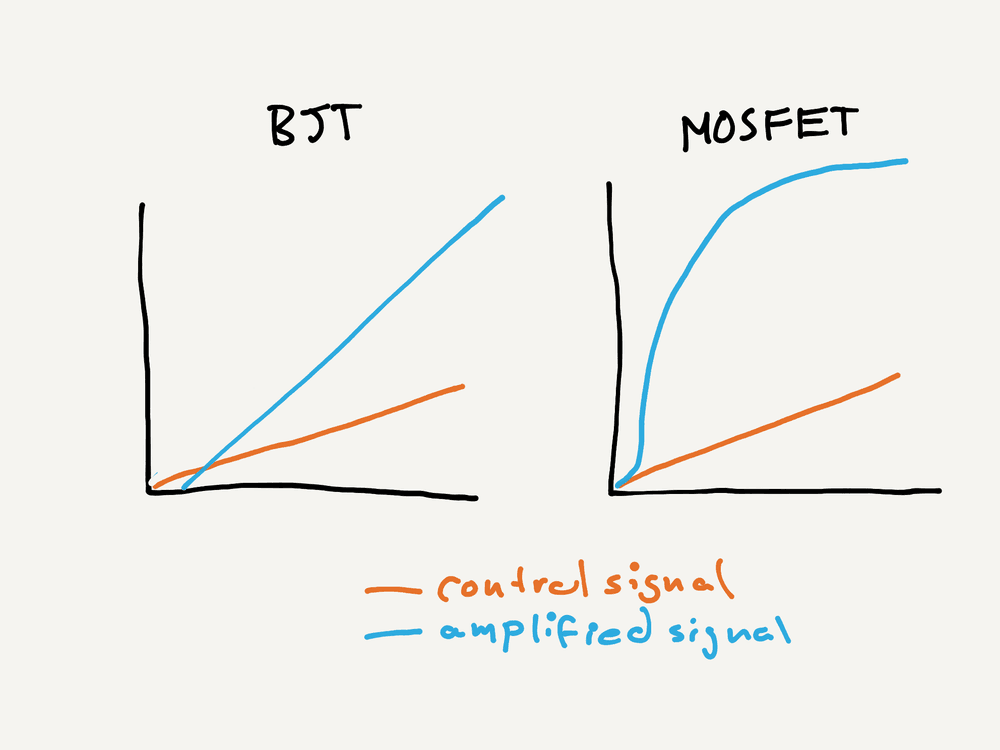Introduction to Transistors
Note - This chapter is in beta and not quite done yet.
Amplifiers, switches, and the fundamental building blocks of modern electronics.
There is probably no singular component in electronics that is more important, or more prevalent in electronics than the transistor.
The idea was first patented in 1926, but it wasn't until two decades later, in 1947, that the first actual transistor was created. Today, transistors are etched into CPUs and other processors by the billions are the fundamental building block of nearly every piece of electronics we use.
N-P-N + P-N-P Junctions
In the last section we examined how P-N junctions created a one-way flow of electricity by generating a charge gap that either gets stronger or weaker depending on the polarity of electrical force applied to it.
But what happens when you make an N-P-N or a P-N-P junction like two diodes smashed together?

This seems a little non-intuitive, as there's no way the electricity can flow through without applying so much voltage that a reverse breakdown occurs and current flows. However, things become more interesting when we add a lead to the center, where current can be sent:

Effectively, that applying current there serves as a gate between the two ends, enabling current to flow from one end to the other.
Fundamentally, transistors are essentially just that.
N-Channel MOSFET
Jumping ahead a bit and taking at look at probably the most commonly used transistor in existence, the N-Channel MOSFET, we can see how this would work from a concrete perspective. As positive voltage is applied to the Gate in the middle, it attracts the minority negative charges in the P-Type section, causing a channel between the source and drain where the charges can cross and electricity flows:
[Note - Switch sides of Source and Drain, add an insulation label to brown bit.]
MOSFETs vs. BJTs
While Wikipedia lists 52 different types of transistors, there are really only two types of transistors that are commonly used in modern digital circuits, MOSFETs, and BJTs.
- MOSFET = Metal-Oxide Semiconductor Field-Effect Transistor
- BJT = Bipolar Junction Transistor
Both are "transistors," however, BJTs are usually what people have historically thought of as transistors and have been used for over 70 years.
MOSFETs = new hotness, BJTs = old and busted.
If this tutorial were written just 10 years ago, it would likely have focused on BJTs, however, in modern digital circuits, MOSFETs have replaced BJTs for nearly everything. This is because of two reasons.
MOSFETs are voltage devices.

First, MOSFETs operate on voltage, meaning that they act like a pressure switch, as voltage is applied, it controls the valve.
BJTs on the other hand, operate on current, meaning that while voltage is applied to the gate to control curret flow, it actually uses the current through the gate!
This means that MOSFETs are much more power efficent.
MOSFETS handle large current loads better.
Due to the way they work, they're also far better at handling larger current loads while wasting less energy as heat. As such; when working with larger current loads, you'll almost always want to use a MOSFET.
Operation
One of the interesting behaviors of transistors is that they can act both as an electronic switch, and as a signal amplifier.
As a Logical Switch
Most often, we use transistors to digitally switch (logical ON/OFF) higher current or voltage loads with a smaller controlling current or voltage. For instance, if we wanted to control a 6V DC motor using a 3.3V digital output on a Meadow board, we could use a transistor circuit that acts a sort of digital "switch" to allow 6V from an external source to flow through the motor:
As an Amplifier
If you apply an intermediary amount of voltage, you can control how much current is let through. This pattern of usage is called signal amplification because you're typically using a smaller signal (the controlling voltage to the gate) to control a large signal (the current between source and drain). So for instance, not only can you switch ON a DC motor, but you could potentially set it to 60% power.
In this regard, BJTs are actually better for traditional analog circuit amplifiers because their control signal to switching behavior is linear, whereas MOSFETs have a logarithmic behavior, making it more difficult to have fine-grain control over the amplification.

Versatile Component
The versatility and utility of transistors make them one of the most powerful and commonly used components in our circuit toolbox. In fact, most circuits are comprised of some combination of transistors, resistors, and capacitors (which we'll dive into later).
Let's dive into the physics of how MOSFETs work, which will help us understand how to use them.


